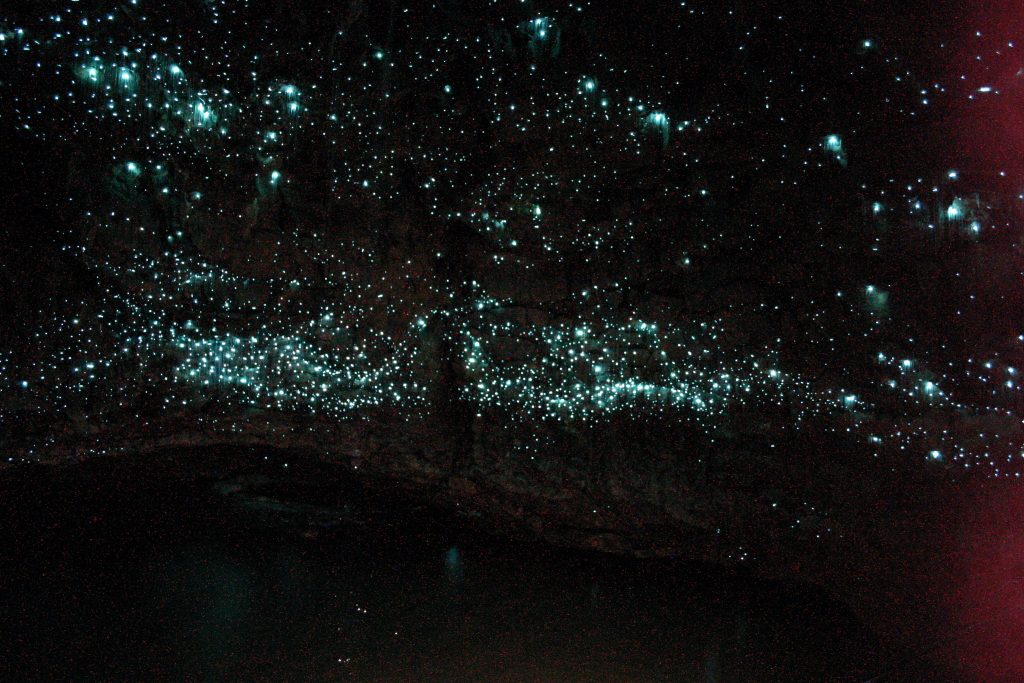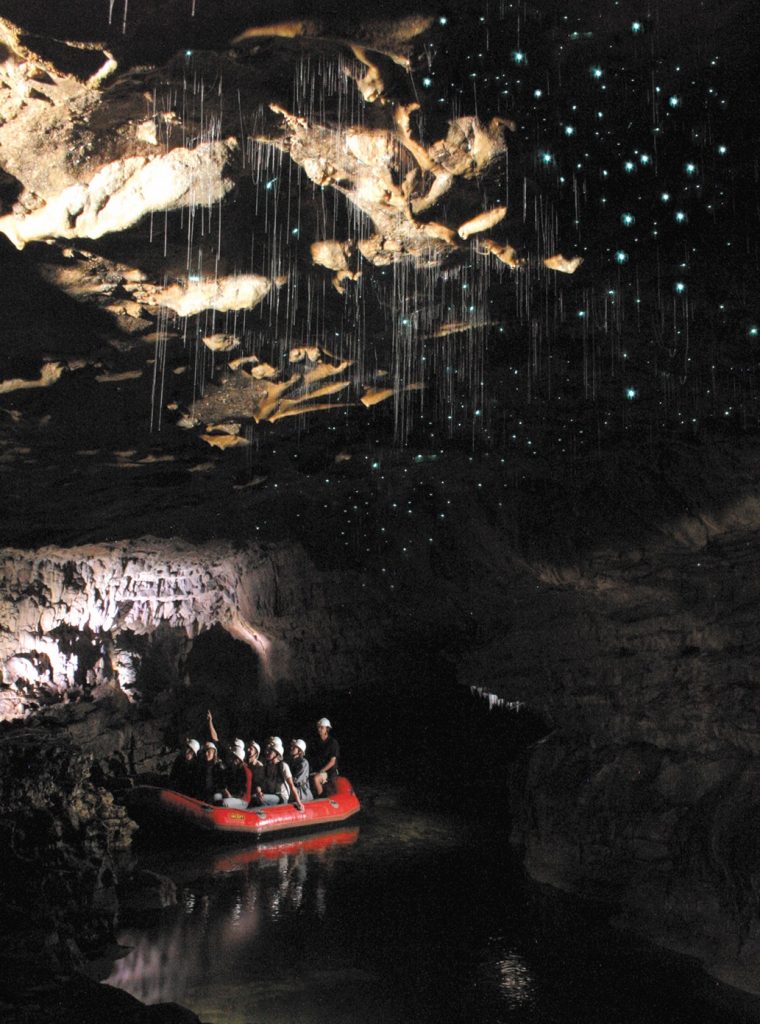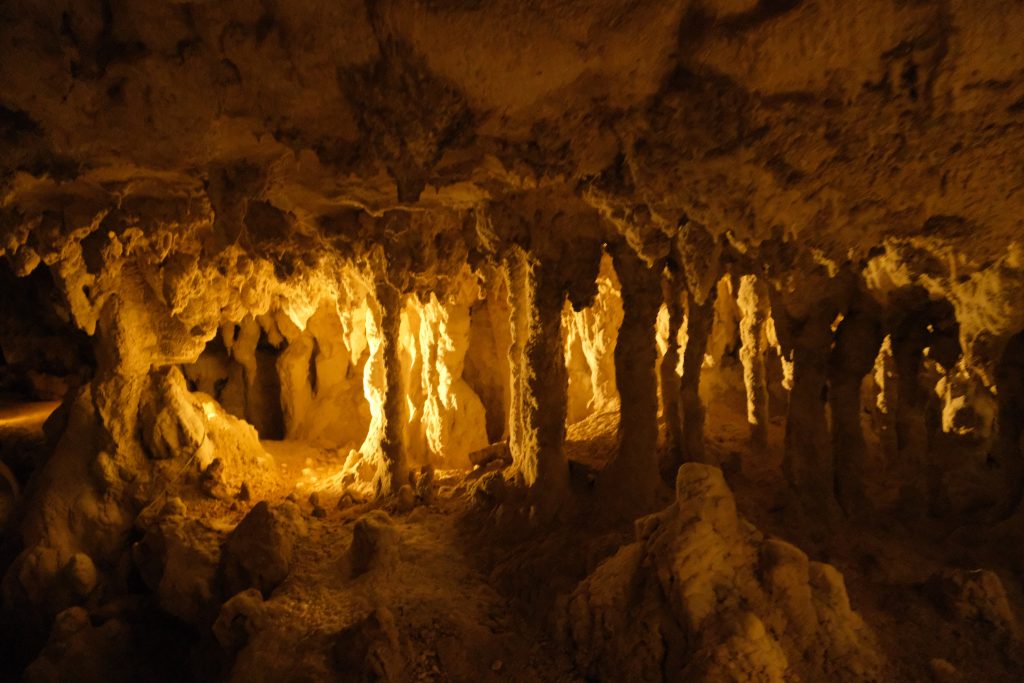
By Haakon
Jan 20 2020
About a week ago my mom, my sister, and I felt like we were in fairy tale, but we weren’t, we were just inside the dim blue illuminated caves in Waitomo, New Zealand where glow-worms live. I didn’t really have any expectations, but I would sum up the experience as something magical.
On a clear sunny day in the north island we drove through rolling hills of pastureland , it was hard to image there would be anything more than dirt below us. We ended up at the bottom of a hill, along a creek where a cave mouth opened leading us into the darkness. When first entering the cave it seems like a normal cave, besides the 100’s of stalactites and stalagmites all around us, but soon we turned off our lights and waited 5 minutes for our eyes to adjust to the darkness; slowly but surely dim strings of blue light started to appear all around us in clusters. Looking closer in between every little dangling strand of transparent blue web-like formations, there was a glowing worm. Traveling further into the cave, the air getting cooler and the sound of a distant water fall louder, we boarded a small raft. Floating silently down the underground river, we turned the corner and there they were thousands of specks reflecting off the water and lighting up the walls and ceiling of the cave with a sort turquoise glow. I felt I was right under the Milkyway looking up at the dotted stars across the pitch-black night sky, only they weren’t stars they were glow worms. Their light defined the contour of the cave and we could see their world. We gradually made it back the the mouth of the cave, leaving this wonderland behind us and I was filled with awe that such an amazing ecosystem exists on our planet.

Wanting to understand this more I did little research on glow worms. Glow-worms are not actually worms, they are the larval stage of the fungus gnat. Glow-worms live in damp, dark, and still forests or cave systems where there is appropriate prey (other types of flies), they hang from gully walls, cave ceilings, and along stream banks. The prominent feature of the fungus gnat is hinted at in its larval name (glow-worm). The larval stage takes the predominant portion of the life-cycle, about a year. Then the remaining few weeks and days on either end of the cycle changing form egg to larva and larvae to gnat. The natural glow emitted during the larva stage is called bioluminescence. Glow-worms have a light-producing gland in their tail that is a byproduct of an enzyme called luciferase reacting with the multitude of chemicals.
How does a glow-worm find its food in a dark cave? Glow worms are blind and so create “fishing lines” to catch flies. It takes glow worm 1-15 minutes to form a line up to 500 mm long, glow worms in caves tend to have longer lines then the bush-dwelling-glowworms where the wind can tangle their lines. The glow worms web is made by their mouth and once the web is down, they will coat it in sticky mucous to catch their prey (usually flies). With the bioluminescent light in their tail they can attract/trick flies into thinking that their tail is light to the open sky, thereby catching their prey. Glow-worms then emerge from their tube to eat their prey. Sometimes, if the tension or vibration in the line suggests it is too far down the line to be considered safe they can reel the prey in or cut the over-sized unwanted prey from their line.
Interestingly Glowworms are only found in the southern portion of the ancient continent of Gondwana. 550 million years ago this ancient component of Pangea was comprised of South America, where I just was; Australasia, where I am now; and Africa, where I am going next.
